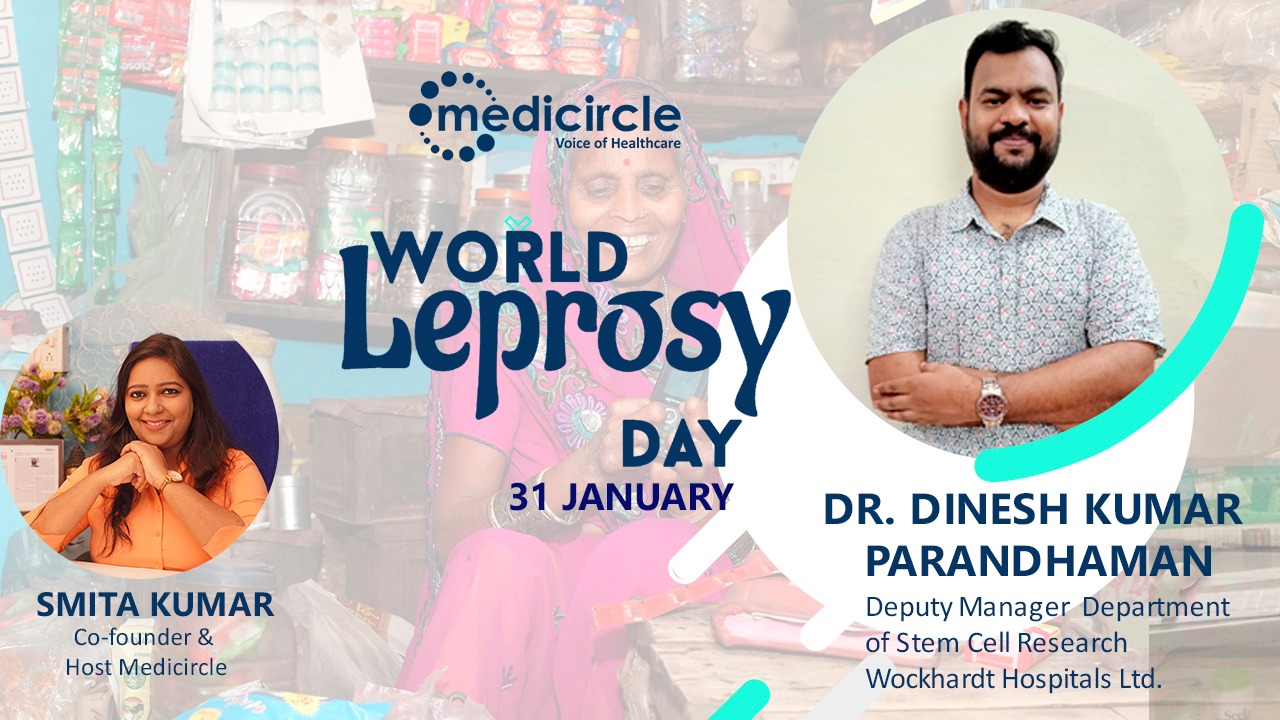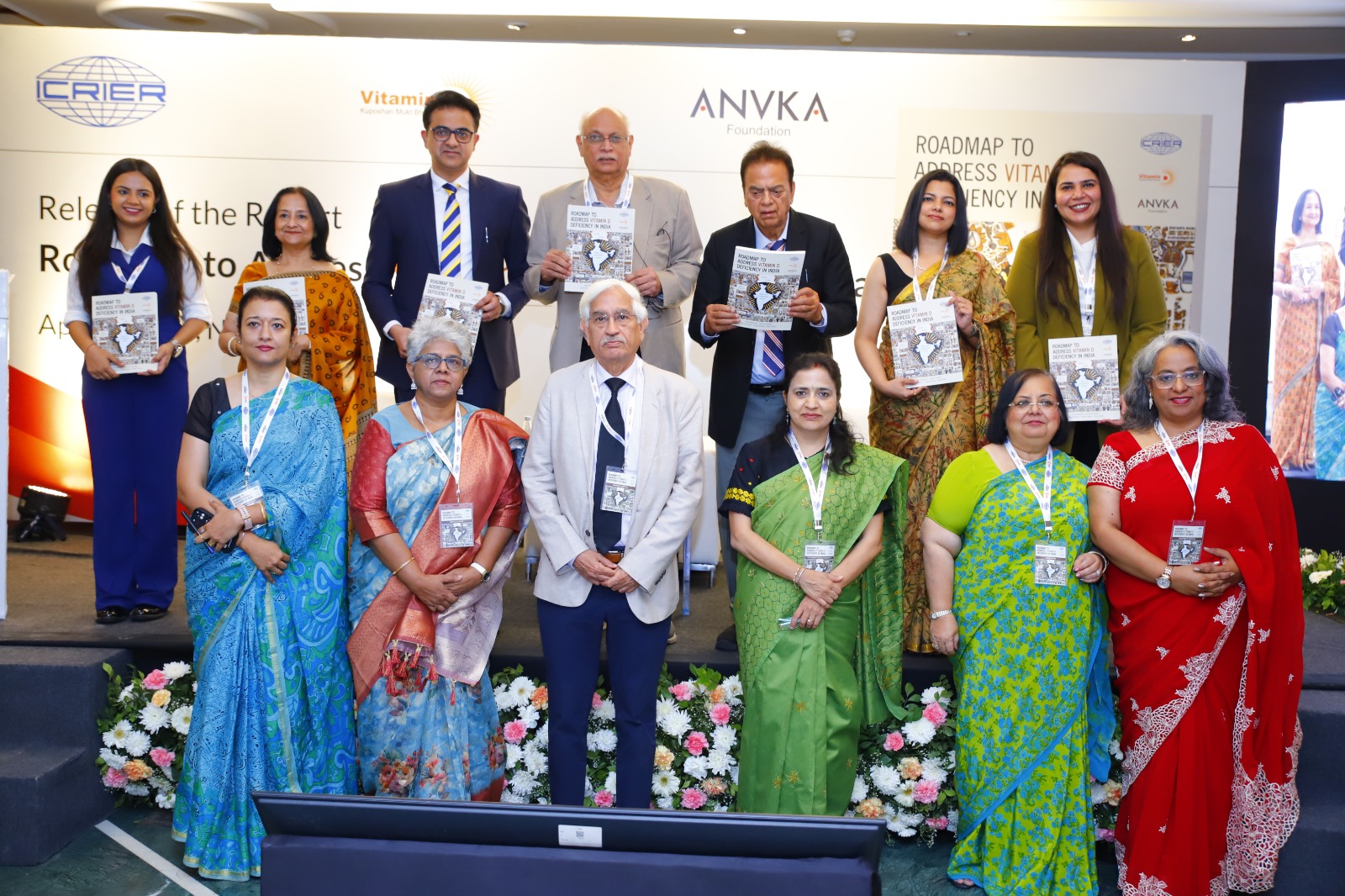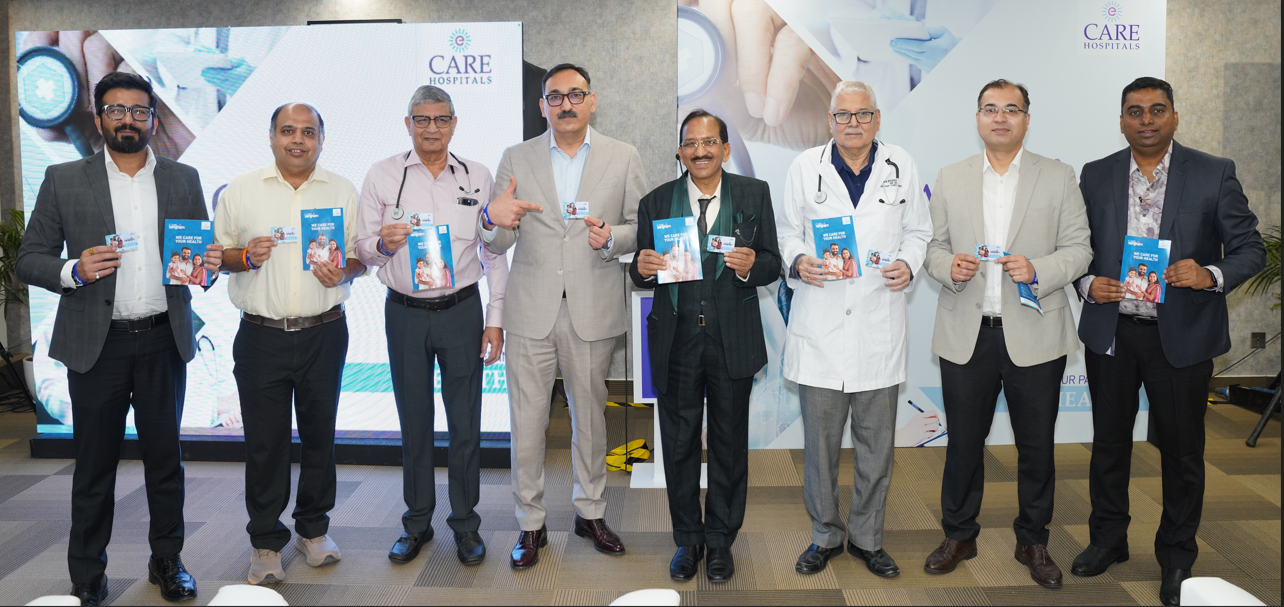Dr. Dinesh Kumar Paramdhaman, Deputy Manager - Department of stem cell research, Wockhardt hospitals, Mumbai, is a clinical researcher involved in translational opportunities.
Awareness and eradication of leprosy
Dr. Dinesh shares how he is contributing towards eradicating leprosy, “My role here is providing awareness. As a tuberculosis researcher, tuberculosis and leprosy share similar pathological responses, so I had the opportunity to study and understand leprosy as well as interact with some of the patients. Whenever we talk about the stigmas attached to leprosy disease, many of the population that I have come across are very poor, underprivileged, uneducated, or illiterate, it becomes imperative to bring out the stigma so that they reach the reference centers, primary health care centers or hospitals to have their diagnosis done in the right time to curtail the disease transmission. Hence, I have given certain awareness talks between my family members; they have picked up these issues whenever they had an opportunity to speak at their respective workplaces to bring about awareness. So this is one of my contributions for the awareness and eradication of leprosy,” he says.
Need ways to sustain even after the disease
Dr. Dinesh, “The elimination of leprosy was reported based on WHO criteria when there was less than one case per 10,000. So, whenever you detect a case, which is less than one per 10,000 population, it becomes a criterion for the disease to be declared as eliminated. But as follow-up programs may or may not be emphasized or were not properly implemented which could have been one of the reasons for the re-emergence of this particular disease occurring in the endemic pockets. Hence criteria such as whether there was any kind of post follow up program to follow up on the cases which have been cured or were there any kind of healthy household contacts who have been exposed to them, but they were left untreated or they have not been part of the diagnostic programs when the active cases have been studied, this factor would have been another reason. Second, self-declaration - whenever people come to the Reference Center or a hospital, then only the cases are recorded, it doesn't mean that the government is not reaching to the rural areas, but how many of them are coming forward to say that I have this kind of a problem and it needs a diagnosis, because, leprosy is always associated with stigma. The third is a post-elimination policy regarding disease eradication. Hence there are multiple factors, I think one of the major areas that we need to concentrate on is providing proper awareness and then the follow-up programs so that we can track them. Fourth is because of the stigma and discrimination, the underprivileged lose their livelihoods. So, if there is a kind of a platform for them to sustain even after having the disease will have a positive impact on the disease control,” he says.
Proper hygiene measures to avoid the spread of Leprosy
Dr. Dinesh speaks on preventive measures, “The major change that is required is the awareness campaigns as it is associated with lots of stigmas, but with proper awareness programs, educating the people, many have come forward and it has aided in proper control of the disease. So, in a similar manner, the government, the media, even the actors, if they come forward to spread awareness, we would reach more people and reduce the stigma and ostracism that are being phased by the leprosy patients. And by way of creating awareness, because it also affects the likelihood if we give them proper policies or if we give them proper information. That will also aid people in coming forward to get them diagnosed which can reduce the disease spread as they are going to be the incubators for the disease as this is an airborne disease. So, whoever comes in contact with them, they are also going to be the carrier population. And likewise, the chain is going to continue and the disease is going to spread. So, the major way we can dispel the disease is to provide proper awareness, and because the government has already identified the endemic regions or endemic pockets within India, where the diseases are more prevalent, in those areas, more stringent campaigns and diagnostic policies can dispel the disease. The preventive measures are proper hygiene and whenever you come in contact with a leprosy patient, you should follow proper hygiene measures so that you don't contract the disease and reduce the carrier transmission which is occurring within the community,” he says.
Mass vaccination program can be implemented
Dr. Dinesh explains about vaccines, “BCG is one of the major vaccines which is being used to curtail the mycobacterium diseases and it has its own efficiency in older adults. So, the revaccination programs in some of the studies like for example in Malawi and in Brazil was good for leprosy patients. So, maybe we should try out revaccination with BCG, which has been seen in other pockets, but the feasibility study has to be done whether the same revaccination program can be done in India. So if you see the clinical trial registries like the US clinical trial registry, as of date, there are 31 clinical trials that are registered with the US clinical trials, among them there is only one vaccine candidate that is in the trial. The rest of them are more likely chemotherapeutics. Now why it is not made as a mandate is because still, we need to understand the host dynamics, it is not very common; it is common in endemic regions, where the disease rate is very high but not everywhere. So, we need to first do proper epidemiological surveys, understand the force dynamics, and then identify the right population so that the vaccination programs can be implemented. Because vaccinating a mass population may not be beneficial, because even after vaccination, nobody has any idea about what kind of response we are going to have. So I think first we need to understand the epistemological aspect and the second thing is the host dynamics and the third thing is to identify the right population that needs this vaccination. And when we are aware of all these three questions, then a mass vaccination program can be implemented,” he says.
(Edited by Rabia Mistry Mulla)

 “With proper awareness programs and educating the masses, many have come forward to report, which has aided in proper control of the disease,†says Dr. Dinesh Kumar Paramdhaman, Deputy Manager - Department of stem cell research, Wockhardt hospitals, Mumbai.
“With proper awareness programs and educating the masses, many have come forward to report, which has aided in proper control of the disease,†says Dr. Dinesh Kumar Paramdhaman, Deputy Manager - Department of stem cell research, Wockhardt hospitals, Mumbai.




.jpeg)
.jpeg)
.jpeg)
.jpeg)
.jpeg)
.jpeg)



.jpeg)





.jpeg)



.jpg)




.jpg)


